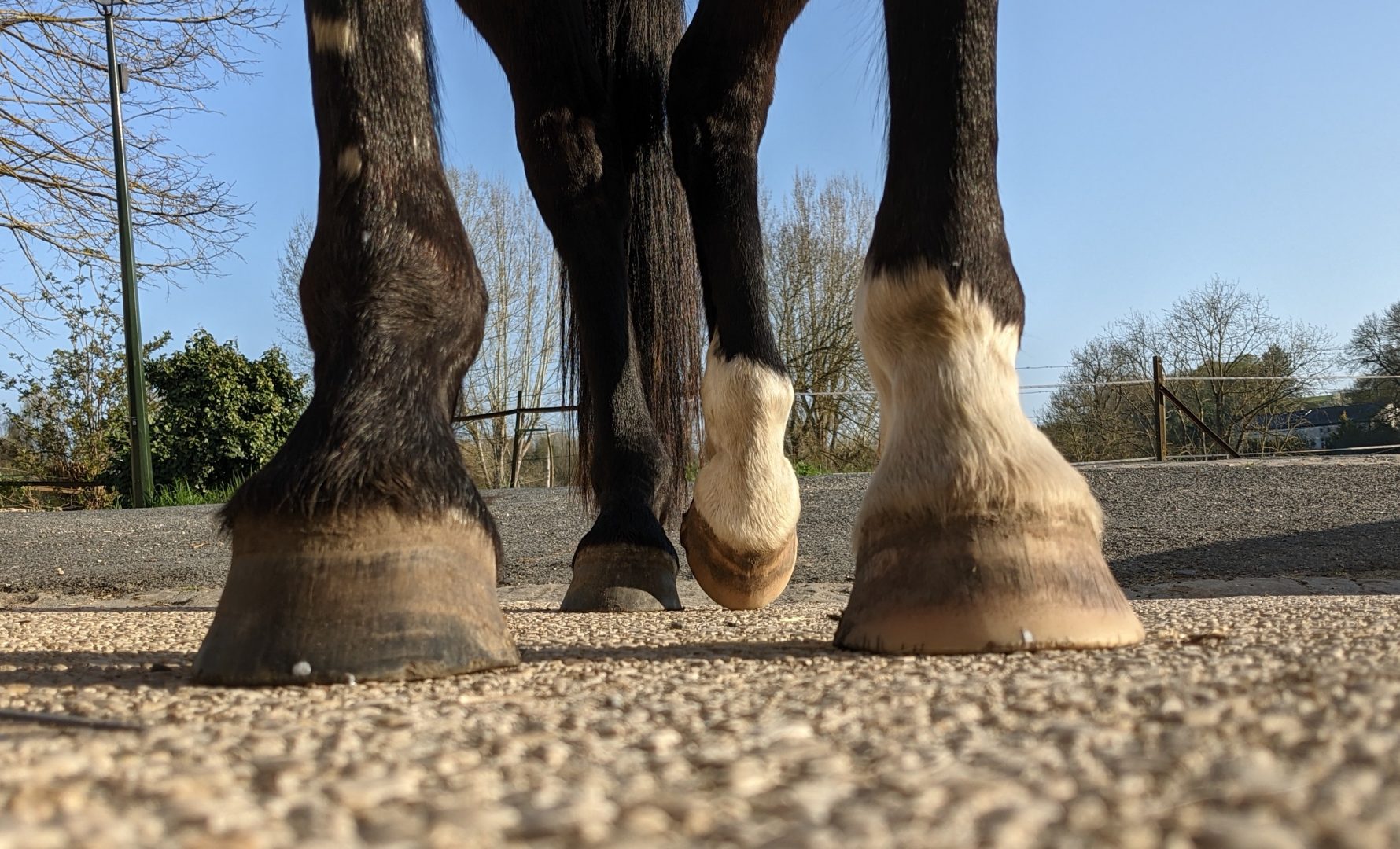The prepurchase examination is complete and rigorous: from the tip of the ears to the end of the tail, everything is carefully studied! This examination is the responsibility of the veterinarian, essential step in order to put the maximum of luck on its side to assess the state of health of any new equine.
A perfect visit... except for a few details

Alexandre Legrand is a farrier in the north of France. He started the farrier in 2012 and set up on his own in 2014.
During his activity, he is regularly called upon to take charge of his clients’ new horses.
It is only after the purchase of the equine that he in turn discovers the horse which he will take care of every six weeks.
The feet and limbs are of major importance for the future of health and athletic potential. However, it is customary that the farriers are not part of the prepurchase exam.
What impact can this have? Alexandre shares with us his vision on the issue
The farriers, notable absentees from the purchase visit?
“In my opinion, the importance given to the feet during the purchase visit depends on the interest of the veterinarian in the subject. I think it would be interesting to go a little further than simple x-rays”, explains Alexandre Legrand.

“Here is a recent experience on this subject: an owner for whom I have been involved for several years wished to acquire a horse from a breeding located in Normandy. This rider, located in the north of France, could not be accompanied by her referring veterinarian and therefore made the prepurchase exam by the veterinarian in charge of monitoring the horses of the said breeding. Apart from a positive flexion test on the left front, the veterinarian does not detect any abnormalities and therefore gives the green light. It’s a concluded deal for my client, who decides to acquire the mare and brings her back to the North.
She asks me to intervene as soon as possible so that I share my opinion and proceed to the trimming. This is when things got complicated. Seeing the mare come out of boxing, I am immediately challenged. I ask the owner if she knew about her mare’s club foot. Alas, this was not the case.”
Between awareness, explanations and skepticism
“I have a problem here. As the owner, my client is not aware of the concept of clubfoot. Despite my explanations, I sense his skepticism. So I decide to take measured shots to show him what I’m saying and improve understanding between us. The finding is clear, there is a grip angle of 62.75°. So we have grade 2 clubfoot. All this accompanied by an internal wall angle of 86.42° and an external wall angle of 109.95°. I therefore share with the client the concerns that will be engendered in the management of her young mare of three years old, intended for jumping: an orthopaedic shoe must be put in place, more expensive and more regular than normal.”


“It is clear that it is not pleasant for a buyer to start the career of a young horse with this kind of complications. Thanks to Ekico, it is not only our word that counts, but also concrete measures that cannot be disputed. Following this, the client therefore decides to backtrack and bring the mare back to the farm. She still has to pay the cost of the vet’s purchase visit.”
At the heart of a problem?
“We put our finger on a problem: veterinary visits are often incomplete. We could significantly increase the relevance of this visit by uniting veterinarians and farriers. It is not uncommon for me to see newly acquired horses, and when I explain to the owners that their horses would need more or less specific shoeing depending on their conformation, the owners retort me in astonishment: “Really? But yet nothing was mentioned during the visit?”
From there, it is the word of the farrier against that of the veterinarian. This is not normal. We work together for the good of the horse and should complement each other rather than confront each other. In this type of situation, the Ekico pictures support our statements and our fears. The documentation of the feet can sometimes even reveal certain problems that we would not have detected so far upstream.”
Recommendation on the purchase visit
“To conclude, I would therefore recommend that buyers of make two prepurchase exams. One with a veterinarian for the general examination of the horse, and another accompanied by the farrier for the locomotor and orthopaedic examination. The ideal scenario is that the farrier and veterinarian can make the purchase visit together. If the horse is far away and the farrier cannot get there, the buyer could equip himself with a Ekico measuring device and send the pictures to his farrier. This would undoubtedly avoid many unpleasant surprises…”




